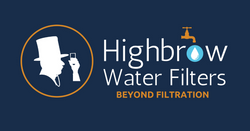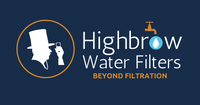Flight Attendants Avoid Drinking Tap Water on Planes, You Should Too!
from healthline
- Recent testing found the tap water on airplanes isn’t very sanitary and the quality varies greatly between different airlines.
- Testing found the presence of microorganisms in the water, including the total coliform bacteria.
- Their presence in drinking water indicates that disease-causing pathogens could be there as well.
- Researchers advise airline passengers to never drink water aboard an airplane unless it’s sealed in a bottle. That includes coffee or tea.
- They also advise passengers to avoid washing your hands in the bathrooms. Use hand sanitizer instead.
For the last decade, Dr. Charles Platkin has studied airline food. But he moved from solids to liquids by first examining a sample of coffee brewed on airplanes.
What he found wasn’t good, so to him, it made sense to keep looking.
“It was kind of natural for me to look at this,” Platkin, the director of the Hunter College New York City Food Policy Center, told Healthline. “When I peeled back the first layer, it didn’t smell so good.”
His most recent bout of sniffing around included how well most commercial airlines were adhering to a law known as the Aircraft Drinking Water Rule (ADWR).
As Platkin explains in his Airline Water Study 2019, ADWR has required all airlines to provide passengers and flight crew with safe drinking water since it was implemented in 2011.
That led to many discoveries — including finding that the rule was passed with little muscle behind it.
Platkin found the Environmental Protection Agency (EPA) to be slow and resistant to his requests for its data related to their enforcement efforts regarding the quality of the water held in the airplane’s tanks. That’s the water served to passengers via flight attendant carts or dispensed through bathroom faucets.
He did find different regulations on airplanes than with other water supplies. And even those weren’t easy to follow, at least in terms of what’s considered safe.
“It’s a — pun intended — watered-down version of those regulations,” Platkin said. “I found the whole thing confusing.”
But there was one thing Platkin found clear, especially after finding out that the EPA rarely fines airlines for having unsafe water aboard their aircraft.
“As a traveler myself, I wouldn’t touch the water,” he said.
For people fearful of germs, the airport and airplanes are terrifying enough places, considering how quickly disease-causing bacteria and viruses can spread through the air from one infected traveler to another.
Airline travelers have had instances of being contacted, days after the fact, that they could’ve been exposed to infectious diseases like tuberculosis or even hepatitis A.
But recent research suggests that besides passenger hosts, the tanks of cold water on an airplane could be Patient Zero for some preventable infections.
While there haven’t been major issues on U.S. airlines related to the quality of their drinking water in recent years, people with compromised immune systems — or even those who don’t want their vacation ruined by a preventable bout of stomach flu — may be interested in what the researchers found.
Platkin says the illnesses caused by microbes in the water held on planes and served to passengers could easily be confused with foodborne illness via the food on the plane, so rarely the water is seen as a culprit.
Looking at testing data from the EPA, Platkin and his team rated major and regional airlines on a scale of 0 to 5.
A low score would be indicative of the presence of microorganisms in the water, including the total coliform bacteria. That’s important, the researchers noted, because their presence in drinking water indicates that disease-causing pathogens could be as well.
According to Platkin’s report, major airlines scored as follows:
- Alaska: 3.3
- Allegiant Air: 3.3
- Hawaiian Airlines: 3.1
- Frontier: 2.6
- Southwest: 2.4
- Delta: 1.6
- American Airlines: 1.5
- United: 1.2
- JetBlue: 1
- Spirit: 1
Here’s how regional airlines fared:
- Piedmont Airlines: 4.33
- Sun Country Airlines: 2.78
- Envoy Air: 2.11
- GoJet Airlines: 2
- Trans States Airlines: 1.78
- Compass Airlines: 1.22
- PSA Airlines: 1.22
- SkyWest: 1.11
- Endeavor Air: 0.78
- Air Wisconsin: 0.68
- ExpressJet: 0.56
- Republic Airways: 0.44
Those ratings are based off data from a 2019 study.
The researchers did note that the number of infractions issued to major and regional airlines have decreased since 2012, the first year data was available under ADWR.
“However, the decrease might reflect a lack of enforcement by the EPA, which has issued few penalties in recent years,” the researchers said.
The researchers also gave the EPA and nearly all major airlines contacted their “Shame on You” award for their “very poor response time and lack of cooperation answering detailed questions,” noting the EPA didn’t answer most questions about the penalties they hand out.
Knowing what they know now, researchers have their “bottom line advice” to all airline passengers: Never drink water aboard an airplane unless it’s sealed in a bottle. That includes coffee or tea.
Also, don’t wash your hands in the bathrooms. Use hand sanitizer instead.
Luke Cheetham, managing director of uRisk Water Hygiene Services in the U.K., says while illnesses caused by flushing toilets are extremely low and not typically a cause for concern, sinks or basin water supplied by a cold water tank onboard an airplane should be avoided.
“When washing your hands, the two mains risks are the cause of illness or infection through breathing in the aerosol of contaminated water or having contaminated water entering your body through cuts on your hands,” he told Healthline.
“Bacteria such as legionella and pseudomonas are pathogens that take these opportunities,” he added.
Cheetham said no matter where you are, drinking water should be of the highest quality, fresh, and free of bad bacteria.
“So, whether you are at home, work, or on a plane, avoid drinking water from bathrooms for hygiene purposes — but more importantly because these areas are often supplied by tanks that are susceptible to poor conditions,” he said.


Leave a comment